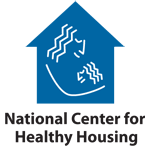|
|
Health & Safety
We do not strictly control Google ad content. If you believe any Google ad is inappropriate, please email us directly here.
Sort results by: Date Added | Alphabetically - In early 2007 Kevin and Kathy Christopherson set about building a home in Hanover, Wisconsin. This was no ordinary new home construction, though. Since Kathy has an acute chemical sensitivity, special precautions were necessary – precautions that presented some particularly challenging construction issues.
- The majority of U.S. families (67 percent) live in a home with at least one major health risk.
- What to look for, and resources to help you find the best, most sustainable products for your baby or child.
- Biomonitoring, the measurement of chemicals in blood, urine, and other tissues or fluids, is becoming an increasingly common tool in the study of human exposure to environmental chemicals; the problem is, it's hard to connect with health outcomes (abstract only).
- Although scientists have postulated a wide range of adverse human health effects of exposure to endocrine-disrupting chemicals (EDCs), the nexus of the debate is the concern that prenatal and childhood exposure to EDCs may be responsible for a variety of abnormalities in human sexuality, gender development and behaviors, reproductive capabilities, and sex ratios.
- Burning candles made from paraffin wax – the most common kind used to infuse rooms with romantic ambiance, warmth, light, and fragrance – is a source of indoor air pollution.
- The safest home in the world can be made unhealthy in minutes if a member of the family practices an art or craft that emits hazardous substances into the air.
- If the gift looks or smells moldy or promotes sneezing or other symptoms - send it on to other pastures.
- The homeowner gains a finished, insulated
basement, a healthy house, and an estimated
energy savings of a whopping 81%.
- This study reveals that a considerable percentage of the U.S. population reports adverse health effects or irritation from fragranced products, (abstract only).
- How HEPA filters work on a vacuum cleaner, and how to be a smart shopper.
- The U.S. Green Building Council (USGBC) provides answers to Frequently Asked Questions (FAQs) about LEED for Homes.
- Q: I read the letter on your Web site about being burned from water exploding from heating in the microwave. This recently happened to me with a cup of coffee. I thought it was because of the material of the coffee cup. I felt ridiculous trying to explain my injuries to anyone because it seemed impossible. My question to you is: Are microwave makers responsible for advisement of this kind of hazard? — JB
- Health and environmental factors associated with carpet include indoor air quality, chemical emissions from manufacturing and disposal operations, and solid waste impacts.
- Compost is organic material that can be used as a soil amendment or as a medium to grow plants.
- How to make your home a healthier place.
- Insulation is needed in warm climates to keep the heat outside and in cold climates to keep the heat inside.
- GS-44 is the first standard to comprehensively address the health, environmental, and labeling concerns for soaps, cleansers, shampoo, and conditioners for adults, children and infants.
- The net cost of owning a green home can be comparable to that of owning a conventional home – sometimes even less.
- These are improvements you can make right now. Some may add years of usability and safety to your home.
We do not strictly control Google ad content. If you believe any Google ad is inappropriate, please email us directly here.



Information provided by The Healthy House Institute is designed to support,
not to replace the relationship between patient/physician or other qualified
healthcare provider.
Education Partners
Ads, ad links, products and content on this page are not necessarily endorsed by these organizations.
|

We do not strictly control Google ad content. If you believe any Google ad is inappropriate, please email us directly here.
|








